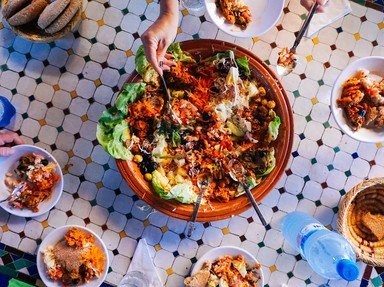Quiz Answer Key and Fun Facts
1. There are many names for fruit preserves: chutney, marmalade, conserve, jam, jelly and so on. Definitions vary, but most modern cooks agree on the difference between a jam and a jelly. What is it?
2. Home cooks generally use "Mason jars" with two-part lids to preserve jams and jellies. When were these developed?
3. Fruit was preserved by the Romans by drying, but also by storing in jars in a form something like modern jam or fruit conserves. What did they use instead of sugar to help delay spoiling?
4. What do jam and jelly cooks mean when they mention a "bail closure" jar?
5. Pectin is a naturally-occurring plant product that is necessary for the gelling of jams or jellies. Which of the following does not contain enough pectin to cause jam to gel?
6. What is a "Jammie Dodger"?
7. It can and has been made with many different ingredients, but what ingredient would most modern cooks agree must be present in order for a preserve to be called a marmalade?
8. Janet Keiller of Dundee, Scotland, is sometimes given credit as the "inventor" of marmalade in the late 1700s. Where did she get the oranges for her first batch?
9. Where in the world is The World's Original Marmalade Awards and Festival?
10. The popularity of home preserving has seen a recent resurgence. In 2009, Seattle food writer Kim O'Donnell founded a hugely popular coalition centred on a website with which of the following names?
Source: Author
SBH
This quiz was reviewed by FunTrivia editor
WesleyCrusher before going online.
Any errors found in FunTrivia content are routinely corrected through our feedback system.


